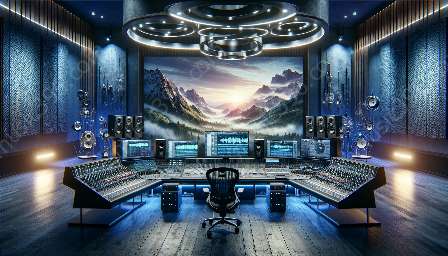Sound beamforming is an increasingly popular technique in the field of audio signal processing. This cutting-edge technology offers a sophisticated approach to optimizing the acoustic environment, with potential applications in various industries including automotive, aerospace, consumer electronics, and more. In this comprehensive guide, we will delve into the principles and applications of sound beamforming, exploring its compatibility with audio signal processing and its potential to revolutionize the way we experience sound. Whether you are an enthusiast, student, professional, or researcher, this topic cluster will provide valuable insights into the fascinating world of acoustic environment optimization.
Understanding Sound Beamforming
Sound beamforming is a technique used to manipulate sound waves in a specific direction, allowing for targeted sound transmission and reception. By controlling the phase and amplitude of individual elements in an array of transducers, sound can be focused or steered towards a particular area, creating spatially selective sound fields.
One of the key concepts in sound beamforming is the principle of phase coherence, where the phase relationship between different transducer elements is carefully adjusted to achieve constructive interference in the desired direction. This enables the creation of directional beams of sound, which can be used for a variety of purposes such as enhancing speech intelligibility in crowded environments, noise reduction, immersive audio experiences, and more.
Integration with Audio Signal Processing
The integration of sound beamforming with audio signal processing opens up a wide range of possibilities for optimizing the acoustic environment. Audio signal processing techniques such as filtering, equalization, and spatial audio processing can be applied in conjunction with sound beamforming to tailor the sound field according to specific requirements.
For example, in automotive applications, sound beamforming combined with audio signal processing can be utilized to create personalized sound zones within a vehicle, providing individual passengers with customized audio experiences. Similarly, in home entertainment systems, the integration of sound beamforming and audio signal processing can enhance the spatialization of sound, creating immersive audio environments for an enhanced listening experience.
Applications in Various Industries
The potential applications of sound beamforming for acoustic environment optimization are diverse and impactful. In the automotive industry, sound beamforming can be employed to mitigate road noise and create quieter, more comfortable interior environments for passengers. Furthermore, it can enable the implementation of targeted sound systems, delivering audio exclusively to specific areas within the vehicle.
Aerospace engineering also stands to benefit from sound beamforming techniques, with applications ranging from cabin acoustics optimization in commercial aircraft to active noise control in cockpit environments. By leveraging sound beamforming and audio signal processing, aerospace engineers can enhance the in-flight experience for passengers and reduce the impact of noise on crew members.
Revolutionizing Consumer Electronics
Consumer electronics represent another domain where sound beamforming holds significant promise. From smart speakers and home theater systems to portable audio devices, the integration of sound beamforming technologies can elevate the audio quality and spatial immersion for users. By leveraging advanced beamforming algorithms and audio signal processing, manufacturers can deliver enhanced audio experiences, personalized sound zones, and improved noise isolation in various consumer electronic products.
Advancements in Research and Development
The research and development landscape presents exciting opportunities for the continued evolution of sound beamforming techniques and their compatibility with audio signal processing. Interdisciplinary collaborations between acousticians, signal processing engineers, and material scientists are driving innovations in transducer design, beamforming algorithms, and adaptive signal processing techniques.
Conclusion
As we journey through the realm of acoustic environment optimization with sound beamforming, it becomes evident that the convergence of sound beamforming techniques and audio signal processing is transforming the way we interact with sound. From automotive and aerospace advancements to consumer electronics innovations, the potential for enhancing our acoustic environments is boundless. By exploring the principles and applications of sound beamforming, we gain a deeper understanding of the intricate interplay between physics, engineering, and signal processing that shapes our auditory experiences.
Whether you are a professional seeking to leverage these technologies or an enthusiast fascinated by the frontiers of audio innovation, the fusion of sound beamforming and audio signal processing offers a captivating domain to explore and contribute to.

